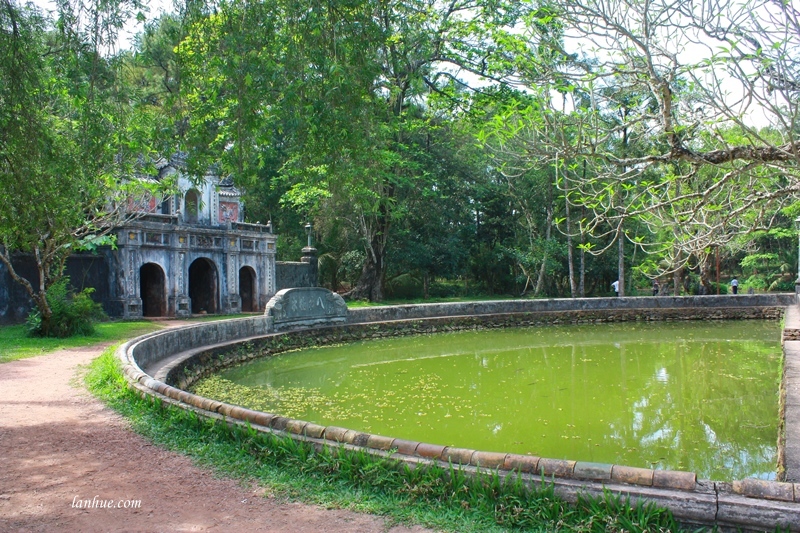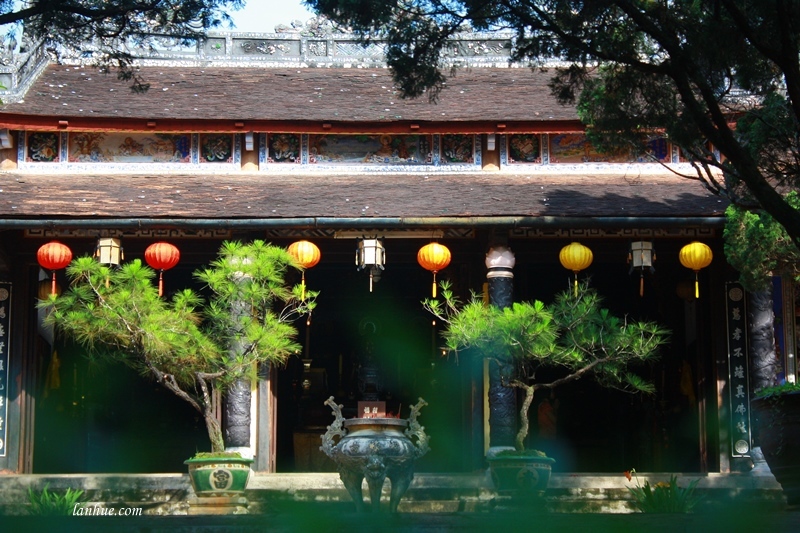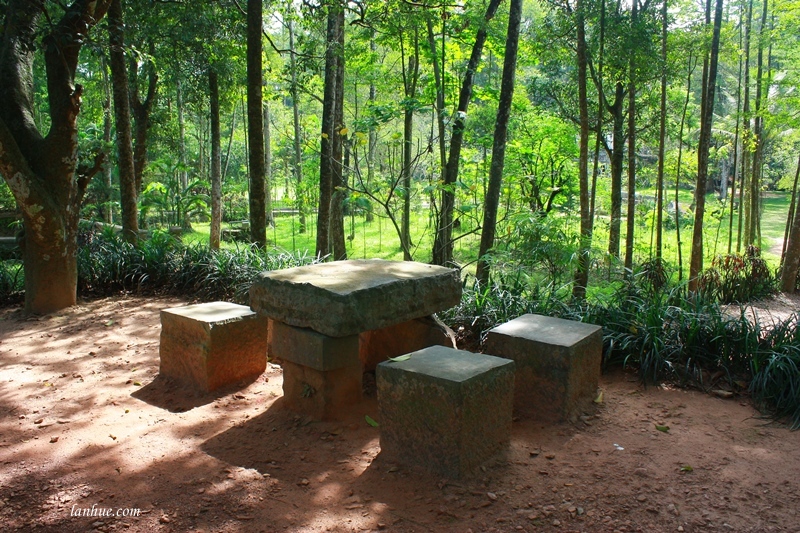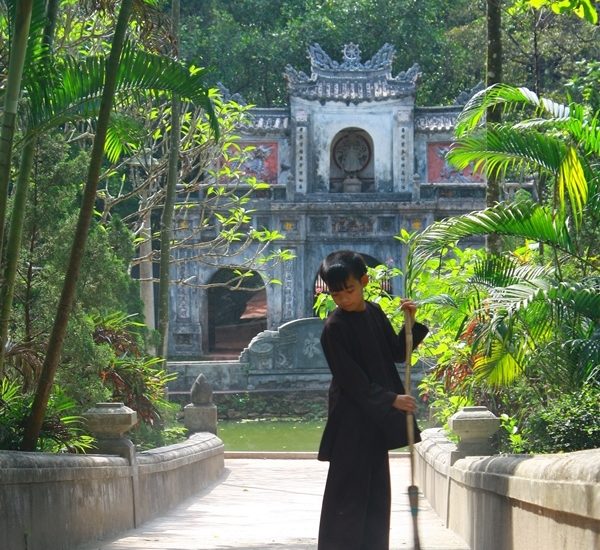
Known as the famous “root pagoda” of Zen master Thích Nhất Hạnh, Từ Hiếu Pagoda is not only a place for the monks to lead an awakening life but also for anyone who wishes to find a serene haven to escape from the busy life or to learn meditation.
Nestled on shallow hills in Thủy Xuân Commune, historic Từ Hiếu is one of the most ancient pagoda in Huế. In the beginning, Từ Hiếu was a small temple founded and headed by Thích Nhất Định who was a noble monk under the first four reigns of Nguyễn Dynasty. Later on in 1848, it was renovated and expanded with the financial support of imperial eunuchs who expected to be buried in the pagoda’s graveyard, and to seek solace for their souls after death. To date, about 30 graves of the eunuchs are still found in the pagoda yard.
After the newly-built greeting gate, there comes a narrow lane, winding among bushes and pine trees, leading to the main gate of Từ Hiếu pagoda. Opposite the triple gate, there is a pine tree hill where Bodhi tower has been established since 1896 for storing the worn bibles as well as broken monastery facilities.

On the other side of the ancient gate, on its second floor, there guards a statue of the Dharma-defender looking over a half-moon pond. A short concrete staircase allows the monks and visitors to descend closer to the water and feed the fish. In the narrow pond, the fish – big and small live in harmony. They are bold enough to swim very close to the bottom step where we are crouching, looking at them. My eyes happen to stop on a strange object in the pond. However, a few seconds later, I discover that it is a large, black fish with a malformed spine which is said to inhabit in the pond for ages. It does not really swim but seem to float without haste among his fellows.
The half-moon pond is linked with the main sanctuary by a tree-lined alley. The main sanctuary is where the monks have worshiping services every day. In its front yard, there are two moss covered stele pavilions, which were relatively built in 1849 and 1899, narrating the establishment of the historic pagoda.

I linger a little bit longer in the bookstore, and ponder the quote “Peace is every step” in calligraphy by Thích Nhất Hạnh which is hung on a wooden pillar. I suddenly long for being taught walking mediation by Thầy – the title, which means teacher or master in Vietnamese, honorably given to Thích Nhất Hạnh himself. I then walk over to the spacious Zen hall where Buddhists gather every Sunday or on special occasion to listen to Dharma talk, or practise meditation.
After strolling around the pagoda, you may wish to find a place to take a rest. My favorite seat is at a set of rock table and stools by a well and a lotus lake. I enjoy sitting in silence to enjoy the white lotus and violet water-lilies bathing in the last sun-drops of a day. By the edge of the lake, there stands a thatched roof pavilion where the monks often sit around to study or relax on sunny days. On the zigzag bamboo bridge, which links the pavilion to the other side, there seats a monk in the posture of a blooming lotus. He is reading a book without caring about the pagoda-goers nor the chirping sound of the insect around.
From time to time, a monk walks past us with his light steps. He properly shapes his hands into a lotus bud in front of the chest to return our greetings. I feel clumsy at first, but I soon get interested in this solemn ritual of greeting. I hardly thought that my two hands would be shaped like a lovely lotus bud before.
Secretly, I start to admire the monks and their manners. Their modest and serene look, for a while, keeps me away from the frenzy world outside the pagoda. They recall to my mind the vivid image of Buddha’s sangha that I once read in “Old Path, White Clouds” by Zen Master Thích Nhất Hạnh, the founder of Lá Bối Press.

As Zen Buddhist monks, they learn Dharma and practise meditation to filter anger, greed and dullness out of their soul and mind. Moreover, they physically train themselves so as to strengthen the bodies, and sharpen the senses. It’s not all. They even spread what they know to the people who would love to gain it.
On a patch of even land, a young monk is engrossed in teaching a few little kids martial art. They are not the novices in the pagoda but the children living in the neighbourhood. From time to time, the monk stops to adjust their incorrect posture. Looking at the boys’ beaming faces, I believe that they love this sport, and are happy with their special instructor.
In the dusk, visitors are leaving the pagoda; however, they know they can always come back. Từ Hiếu is open to anyone who is interested in meditation practice or simply fond of the tranquil atmosphere at the Zen monastery.

– Huế, November 2008 –
